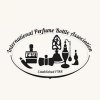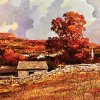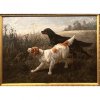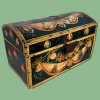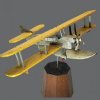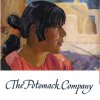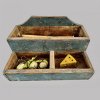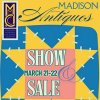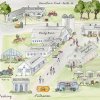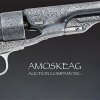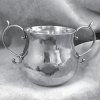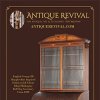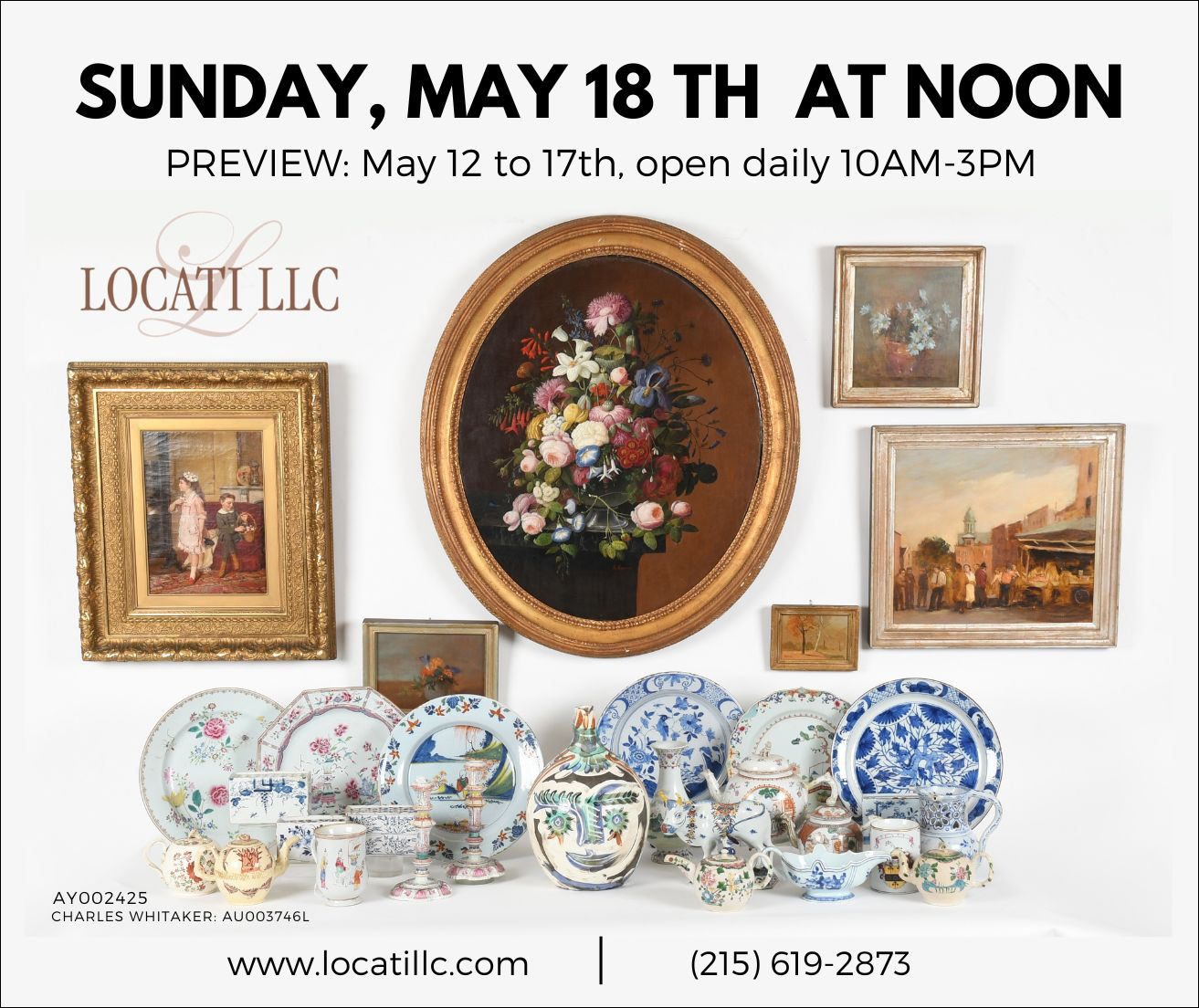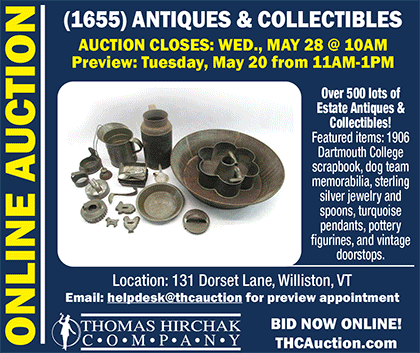SEWE Auction a Success for Guyette & Deeter
February 18th, 2017
Guyette & Deeter, Inc., Charleston, South Carolina
Photos courtesy Guyette & Deeter
The Southeastern Wildlife Exposition (SEWE) was the place to be in February for those who desire fantastic decoys. Guyette & Deeter, Inc. offered more than 280 lots during its Saturday, February 18, auction at the SEWE. The sale total was within estimate at $611,984 (with buyers’ premiums), and the sell-through rate was 98%. Guyette & Deeter attributed the strong sales to extensive promoting and guaranteed condition reports, as well as a low buyer’s premium of 15%.
This was the fifth consecutive decoy and sporting art auction that Guyette & Deeter has held in partnership with the Southeastern Wildlife Exposition. Jon Deeter explained: “SEWE approached us five years ago with the idea of doing an auction to attract new decoy collectors. So we came up with the idea of holding an auction that was shorter than our normal sales, which usually span two days and include 700-plus lots. Instead, for SEWE, the auction is about one-third the length, about four hours long, and is unreserved, which makes for excitement. Then we keep the buyer’s premium low at 15%, while also guaranteeing the condition of each item sold. We do this for our larger auctions, too, so buyers can bid with confidence.” By doing so, SEWE has “revived the tradition of old decoys and collectibles at the show,” helping to attract new interest to the field of decoy collecting. And it seems to be working.

The top lot of the Guyette & Deeter SEWE auction, this rare yellowlegs attributed to John Dilley of Quogue, Long Island, New York, sold for $40,250 (est. $12,000/15,000). Features of this decoy include its turned head, strong original paint, and the word “yellowleg” written in pencil behind the stick pole.
Leading the way at this 2017 edition was a yellowlegs attributed to the mysterious John Dilley of Quogue, Long Island, New York. Having fine feather paint detail and glass eyes, this decoy’s head was turned about 75 degrees to one side. “This is the only Dilley we’ve seen with an animated, meaning turned, head,” Deeter stated. With “yellowleg” handwritten in pencil behind the stick hole, this decoy sold for $40,250 (est. $12,000/15,000).
Not much is known about John Dilley, resulting in speculation as to who this decoy maker was. He is credited with creating some of the finest painted shorebirds in this genre.
“Dilleys are recognizable often by their bill construction,” Deeter stated, “as well as their fastidious paint pattern. Special brushes were used in order to paint the tiny feather loops found on Dilley decoys.” Deeter did say that not much is known about John Dilley but that his mysterious background is accepted by collectors, which adds to the interest in his decoys.
The well-documented Elmer Crowell (1862-1952), a master decoy carver from East Harwich, Massachusetts, was known for his shorebird and waterfowl decoys. Guyette & Deeter offered a rare prestamp widgeon hen, and it did not disappoint. Selling above estimate for $37,375 (est. $25,000/35,000), this example boasted crossed wingtips and a fluted tail, as well as gouge feather carving on its back and an ice dip. The decoy was branded “CWW” three times on the underside for Charles W. Whittier, who was a member of the Swan Island Club in North Carolina.

A top-seller at the Guyette & Deeter, Inc. auction held in conjunction with the Southeastern Wildlife Exposition, this prestamp widgeon hen by Elmer Crowell (1862-1952) of East Harwich, Massachusetts, sold for $37,375 (est. $25,000/35,000). Branded “CWW” three times for Charles W. Whittier, a member of the Swan Island Club in North Carolina, this decoy also boasts carved crossed wingtips and a fluted tail, along with gouge feather carving on its back and an ice dip.

A prestamp example, this redhead hen decoy by Elmer Crowell (1862-1952) of East Harwich, Massachusetts, circa 1900, sold for $11,500 (est. $12,000/15,000). The well-blended paint and fluted tail and the fact that it has never been rigged contributed to its success.
Crowell was an avid hunter as a young man, and because he tended to favor live decoys over carved ones, it is thought that Crowell didn’t start carving decoys in great numbers until he was older. By the late 1920s Crowell was churning out decoys at such a rate that their quality was not as stellar as those done earlier in his life. The widgeon hen mentioned above was from the last quarter of the 19th century, and its superior craftsmanship reflects this.
Carving and painting details as well as condition and maker are major factors in determining a decoy’s value. When an example has all this, plus an unusual form, top dollar is usually offered. A 1936 model greenwing teal drake by the Ward brothers of Crisfield, Maryland, that sold for $19,550 (est. $14,000/18,000) is a great case in point. Besides being in near-mint original paint and structurally excellent, this decoy had an unusual construction not common to a Ward brothers’ decoy, a balsa body with a turned and slightly lifted cedar head.

This 1936 model greenwing teal drake by the Ward brothers—Stephen (1895-1976) and Lemuel T. Jr. (1896-1984)—of Crisfield, Maryland, sold for $19,550 (est. $14,000/18,000). The construction of this decoy was not the norm for the Ward brothers as it has a balsa body with a turned and slightly lifted cedar head. Another factor contributing to the price is that it appears that this decoy was never used.

The Ward brothers of Crisfield, Maryland, were the makers of this late 1920s pinch-breasted pintail drake decoy. The exaggerated pinch breast and a well-sculpted slightly tilted head helped this decoy sell for $20,125 (est. $20,000/30,000).
Another Ward brothers decoy, a late 1920s pinch-breasted pintail drake, sold just within estimate at $20,125 (est. $20,000/30,000). Though this example was a desirable form that was well sculpted with a turned and slightly tilted head, its condition was not as pristine as the aforementioned Ward brothers decoy. Minor discoloration to its original paint, a thin crack through the underside of the neck, and the fact that most of the bill had been replaced professionally by Frank Finney might have affected its final selling price.
A late 19th-century ruddy duck by Alvirah Wright (1865-1951) of Duck, North Carolina, sold for $17,250 (est. $14,000/18,000). This example had an old in-use repaint showing moderate wear as well as a repaired neck crack and several other cracks.
According to the Ward Museum (www.wardmuseum.org), “Alvirah Wright was a boat builder and logger specializing in the harvest of juniper and cypress trees. Wright did little hunting, but between 1900 and 1925, he carved a couple hundred decoys (Coppedge 104). His total output consists of a few scaup and redheads, a large battery of canvasbacks and a rig of ruddy ducks. All of Wright’s work was done by hand with a hatchet, draw knife and spokeshave. With a pocketknife, Wright incised details and then sanded each one of his lures. His solid birds have large wide bodies with rounded bottoms and upswept tails. High heads with delicate bills complement the bodies. A pragmatic carver, Alvirah Wright painted his decoys to resemble the species he was reproducing.”

Wearing old in-use repaint with moderate wear, this ruddy duck by Alvirah Wright (1865-1951) of Duck, North Carolina, is from the last quarter of the 19th century, and it sold for $17,250 (est. $14,000/18,000).
Other decoys offered that resulted in solid sales include an oversize sleeping canvasback drake by Jim Schmiedlin (1945-2015) of Bradford Woods, Pennsylvania. Schmiedlin began carving his own hunting decoys while working at Pittsburgh Brewing (Iron City Beer), where he worked for 40 years. This canvasback was signed and branded with its hunting history on the underside. It sold for $8625 (est. $5000/8000).
A flat-bottom-style Canada goose by Ira Hudson (1876-1949) of Chincoteague, Virginia, wearing its original paint with minor discoloration, did well, selling for $8050 (est. $4000/6000). Hudson was a prolific carver, and it is estimated he produced more than 60,000 decoys in his lifetime, with members of his family helping with the sanding and assembling. According to (www.wardmuseum.org), Hudson “sold his decoys for four dollars per dozen to hunters but he did not hunt.”
A full-size whistling swan decoy, the work of Oliver Lawson (b. 1938) of Crisfield, Maryland, sold strong at $8625 (est. $5000/7000). With its slightly turned head and relief wing carving, this decoy was in very good original condition and was signed on the underside. Lawson was a protégé of the Ward brothers. After school, the ten-year-old Lawson began stopping by the workshop of the Ward brothers, watching as they worked. Soon Lawson was creating decoys of his own.

By Ned Burgess (1868-1962) of Churches Island, North Carolina, this coot in very good original condition sold for $3450 (est. $1400/1800).

Signed and dated 2002, this decorative black duck by Dennis Schroeder of the Trinity Alps region, California, sold for $6325 (est. $2000/3000). Its head is carved in a nestled pose.
Guyette & Deeter holds four cataloged auctions per year, including this February event held at the Southeastern Wildlife Expo in Charleston, South Carolina; an April edition that takes place at the North American Vintage Decoy & Sporting Collectibles Show in St. Charles, Illinois; a summer auction held in Portsmouth, New Hampshire; and in November, the company’s final sale of the year is a featured event at the Waterfowl Festival in Easton, Maryland.
“Many decoy enthusiasts collect according to region,” Deeter explained. “This is why our four yearly auctions take place in different regions, and we tailor our auctions accordingly.”
 Deeter was especially excited for the April auction with its $2.5 million presale estimate as it included a generous consignment by a Canadian businessman and founder of Canaccord Genuity. “[Peter] Brown donated his decoy collection, the largest collection of Canadian decoys to come to market, to our April auction with all proceeds going to Ducks Unlimited, Canada. It should prove to be an exciting, memorable event,” he said.
Deeter was especially excited for the April auction with its $2.5 million presale estimate as it included a generous consignment by a Canadian businessman and founder of Canaccord Genuity. “[Peter] Brown donated his decoy collection, the largest collection of Canadian decoys to come to market, to our April auction with all proceeds going to Ducks Unlimited, Canada. It should prove to be an exciting, memorable event,” he said.
For more information, call (410) 745-0485 or go to (www.guyetteanddeeter.com).
Originally published in the May 2017 issue of Maine Antique Digest. © 2017 Maine Antique Digest


